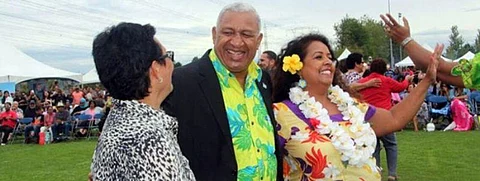
- Home
- न्यूजग्राम
- NewsGram USA
- India
- World
- Politics
- Entertainment
- Culture
- Lifestyle
- Economy
- Sports
- Sp. Coverage
- Misc.
- NewsGram Exclusive
- Jobs / Internships

Back in 1879, when the British took in the 'indentured laborers' from across the whole of India, a large section of the population were transported to the islands of Fiji. And from there the journey started, eventually developing into a new cultural and ethnic evolution of the Indo-Fijians.
Viti Levu, one the largest island in the group of Fijian archipelago, consists of the largest Indo-Fijian settlement. The group which once used to cover about 48 per cent of the population now have fall by a margin of 3 per cent after the military coup of 1987. To trace the cause, we should start with the Fijian law which had back in the days of Colonists stated that there should be an avoidance of inter-mingling between the Fijian and the Indian communities.
Thus, as ordained, the Indo-Fijians mostly inhabited the coastal towns of the islands and opened small shops and projected themselves towards the sugar-cane industry. Though a minority, they soon managed to gain the economical control of the states in their own hands.
The situation was annoying to the Fijians, particularly when it came down to the sugar-cane business, a major cash crop of the regime. And this ultimately ignited the coup which forced a part of the Indo-Fijians to migrate to the countries of Australia, UK and USA.
The migration severely affected the Fijian society resulting in the loss of the one-third of academicians, lawyers and other professionals.
Though, the situation between the communities has relative cooled down a bit from 1988 onwards, still much mixing between them is not expected especially if it comes to forming a romantic relations, e.g. – dating or marriage. Though, the irony is that dating someone from the European community is not faced with hindrances at all.
The Indo-Fijians have retained much of their cultural and societal norms with them, still. It can be elucidated by the example of the popularity of sarees, a traditional Indian wear, among the female members. The most common greeting in Fiji Hindi, a lingo which evolved with generations of Indians settled in the islands, is not surprisingly Namaste.
The major religion among the community is Hinduism, beside Islam and Christianity. A range of secular festivities are performed by the people like celebration of Diwali, the observation and fasts at the time of Ramadan and last but not least that of the Christmas and the Boxing Day.
The Hindu epics of Ramayana and Mahabharata has established an important position in their lives and is highly revered by them.
The source of entertainment comes mostly from outside Fiji, such as from the Hindi film and music industry. A substantial number of videos and cassettes are readily found in the shops of the common localities.
Other than that many classical dance and music academies are opened by the Indo-Fijians. They take heavy interest in continuing the performance arts and encourage the rest of the members to do as well.
2. Food, Education and Others
Then there is the sector of education, which the elders as well the younger generation take into much consideration. Not a thing to be neglected most of the Indo-Fijians pursue the path of higher degrees.
The Indian food culture also has taken its hold there, with the 'Roti' which has become a staple food and custom of only eating their meals with right hands.
Ultimately, it will be interesting to know that like the much of India, the craze of Cricket has also reach its zenith among the common folks of the community. (Input from agencies)
